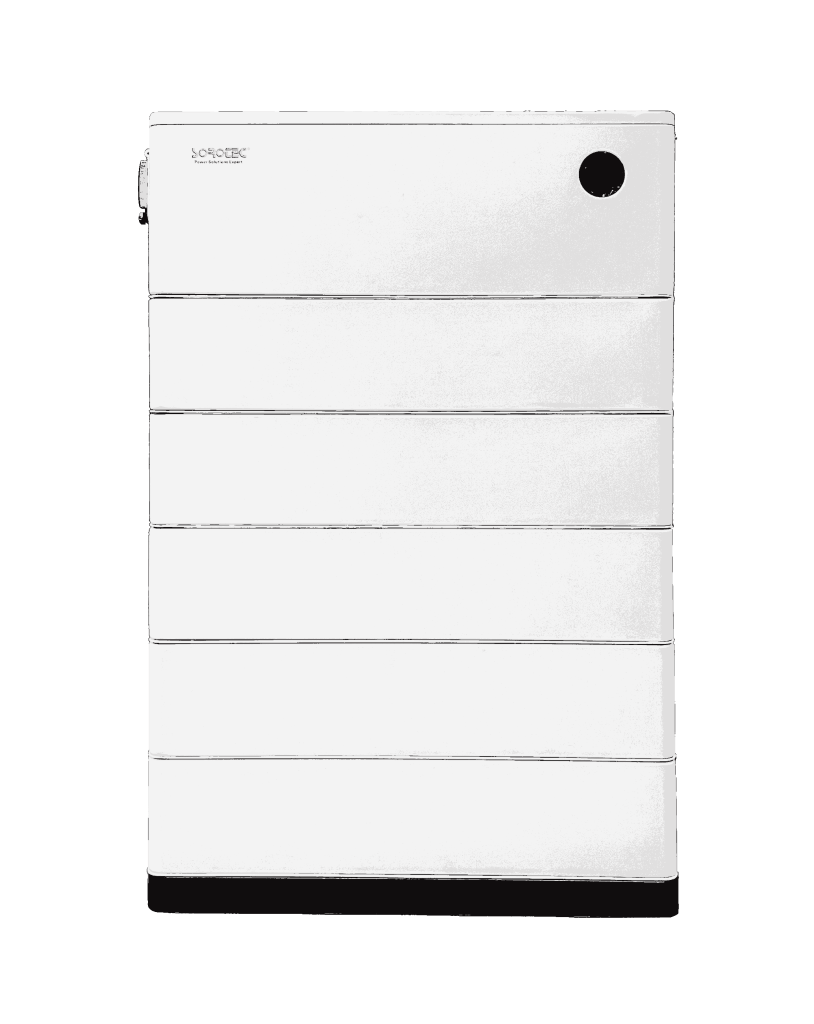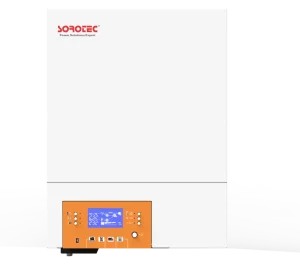The distance limitations of solar panels are crucial factors in their efficiency and performance. To maximize their energy production, solar panels need to be installed in locations with optimal sunlight exposure.
Factors Influencing the Distance Between Solar Panels and the House
Impact of Cable Length on Energy Efficiency
The separation of solar panels through the homestead markedly proceeds to energy efficiency. The farther you run the cable, the larger the resistance, and thus power loss will be. In high-demand use cases, the resulting voltage drop can make your solar system inefficient because of this resistance.
Inverter Placement and Its Role in Distance Considerations
One of the most significant factors that influence how distance can solar panels go from the house is the placement of the inverter. Inverters change direct current (DC) from the solar panels into alternating current (AC) for home use. Thus, locating the inverter candidly as per the layout of the solar panels can lower losses during the DC transmission.
Local Regulations and Building Codes Affecting Distance
Regulations and building codes vary, and they may also indicate how far away the solar panels can be from your house. Depending on the codes, wiring, grounding or even safety requirements may influence the installation options. Some regions limit maximum voltage drop or demand extra equipment such as protective devices for long cable runs.
Technical Considerations for Long-Distance Solar Panel Installations
Selection of Appropriate Wiring for Extended Distances
Long distances between the solar panels and your house require the appropriate wiring. This requires thicker wires with lower resistance that are more efficient at minimizing energy loss over long runs. Copper or aluminum in general can also be seen, which are conductive and durable materials.
The Role of Charge Controllers in Long-Distance Systems
Charge controllers play a vital role in controlling the energy movement from solar panels toward batteries or directly into the electrical system of the home. They control voltage and current to protect batteries from overburden or destruction in long-range arrangements in light of the line obstruction or different costs applying outside the wire.
Battery Storage Solutions for Remote Solar Panel Systems
Solar panels can be installed much further from the home than it is physically possible to carry out the energy produced, so this is a case where battery storage systems become critical. Effective storage systems ensure that the energy produced during peak sunlight hours can be stored for later use without undergoing considerable loss when transmitted to the relevant site of consumption.
Practical Applications of SOROTEC Products in Long-Distance Setups
SOROTEC Inverters Designed for Optimized Performance Over Distance
When addressing long-distance setups between solar panels and homes, advanced inverter technologies become indispensable. SOROTEC offers a range of high-performance inverters tailored for such scenarios. For example:
REVO VM IV PRO-T: A no-battery inverter with dual output for smart load management It comes with a configurable AC/PV output usage time and also a priority setting. It comes with an integrated Wi-Fi which facilitates remote monitoring through smartphones.
These features not only enhance overall system efficiency but also simplify monitoring and maintenance processes.
SOROTEC Battery Solutions for Enhanced Storage Capacity and Durability
Utilizing robust battery systems provides constant access to renewable energy even if solar panels are located miles away from where the energy is used. Manufacturing intelligent battery management systems (BMS) at the center of its battery solutions, SOROTEC equips users with high-performance and safe product features.
For example: SL-RH/S-EU batteries have a service life of up to 6,000 cycles. They are relatively simple to install and provide multiple protections. This leads to their ability to be configured for use at home as well as industrial applications due to their flexible configuration.
Installation Strategies to Maximize Efficiency in Distant Solar Panels
Best Practices for Cable Routing to Reduce Energy Losses
The farther the solar panel system is from your home, the greater the importance of efficient cable routing in terms of keeping the system working optimally. Energy losses due to resistance, which are also a consequence of longer cable runs, can be solved by using low-resistance high-conductivity cables.
Importance of Proper Grounding in Extended Solar Systems
Grounding is the most important aspect of additional safety in every solar setup, particularly in the case of longer types of setups. Good grounding causes electrical faults not to damage equipment or injure users. The potential for voltage surges or lightning strikes is greater in distant arrangements because of the larger exposure area.
Install grounding rods or plates along the cable run at regular intervals to guarantee that the entirety of the system has reliable protection. Also, it is a requirement for all metallic parts such as the frames and mounts to be connected to the earthing system to avoid future risks.
Recommendations for Choosing the Right Equipment and Setup with SOROTEC
Evaluating System Requirements Based on Distance and Power Needs
If your solar panel installation is far away from your house, you have to calculate exactly how far away and how much power your system will be operating on. Cable runs are always going to be longer than ideal, which directly affects voltage drop, so they need an inverter that can tolerate that.
Future-Proofing Solar Installations with Advanced SOROTEC Technologies
To future-proof your solar installation, you will need technologies that can adapt to changing energy demands but also technologies that will still work for the long haul. With smart products, such as Wi-Fi remote monitoring to track performance and diagnostics, on the rise, the ability to visualize and respond to changes quickly and easily is possible. This feature makes maintenance a lot easier and helps you fix problems before they get out of hand.
As an example, the REVO HMT inverter from SOROTEC accepts max six devices running in parallel with single-phase or three-phase output. It also features smart load management, which redistributes energy based on usage. These innovations save time and make your system ready to scale in the future.
Another approach is designing charging capabilities that can handle certain peaks and valleys. MPPT SCC and products equipped with intelligent max point power tracking technology, optimize battery performance even with long-distance solar systems.
FAQs
Q1 Why does cable thickness matter in solar plants that are far apart from one another?
A: Thicker cables provide less resistance, which means less energy is lost over long distances, allowing your solar panel system to perform its best.
Q2: What is grounding and how does it protect the equipment and users?
A: Grounding is important in any large system because it helps to prevent the buildup of static or leakage currents, protects against lightning strikes, and provides a pathway for fault currents to flow safely into the earth.
Q3: What product options should one consider for a long-distance and/or a 1-on-2-step installation?
A: Inverters such as REVO VM IV PRO-T and batteries like SL-RH/S-EU are tailored for longer distance setup with optimal performance as well as to be reliable and durable.










